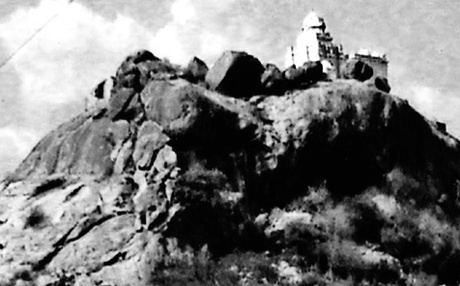
Stone quarrying activities in the vicinity of the Sankaranmalai hill located at Sankaranmalai of Chithalavai panchayat near Mayanur here, has threatened the 900-year-old historic later Chola period era inscriptions found here.
Locals here complain that large quantities of stones required for road-laying work nearby, was quarried from this hill. This would add to the damage of the ancient inscriptions if quarrying continued, besides spoiling the ecology of the place, they fear.
The inscriptions of Kulothanga-III of the 12th century, portraying his decree was discovered recently in the Sankaranmalai hill. The hill also boasts of a Siva temple at its top, which contains inscriptions of Kulothunga-III and the Pandya King, Veera Pandyan. The Sankaranmalai hill is situated at Madukarai, the boundary of the erstwhile Chera and Chola territory. Karur, earlier called as Thattaiyur, was under the rule of chieftain Kallingarayan, who was a representative of King Kulothanga in 1190 AD.
Inscriptions engraved in the rocks explain the devotional care of the Chola and Pandya kings to maintain the dilapidated Siva temple on top of the hill, and to regulate religious work. The inscriptions throw light on the religious and cultural practices of Tamils, besides the administrative system and the history of the period.
The Chola king who ruled from his capital at Thanjavur had ordered Kallingarayan to maintain and regularly perform religious rituals in the temple. It shows the works were handed over by Kallingarayan to Katchirayan, a chief of this particular location.The inscriptions composed of 42 lines embedded on a vertical rock facing south of Sankaranmalai says that in 1190 AD, the reign of Kulothunga-III, the historic temple located at Sankaranmalai was dilapidated. The inscription also has the orders of the King to maintain the temple by collecting taxes and proceeds from the wetlands, drylands, ponds, gardens, wells and trees within its boundaries, to provide sweets, fruits, and food to the temple and to perform rituals. For oil offering such as sesame and mango; taxes for coconut tree, palm tree, oil crusher and rock could be levied, states the King’s order.
As per the order of Kallingarayan, Avur Kanakan, the accountant, could engrave it on the stones and metals. He could cultivate the temple lands placing four trisulam around the temple lands – inscripted by Katchirayen and Viluparaiyan.
In 1196 AD, Kallingarayen reviewed the functioning of the temple and was satisfied with its maintenance. Then he had engraved the accomplishment of the order announced by the Chola king.
At the bedrock of the hill, inscriptions engraved by the Pandya king during 1218 AD can be found.
source: http://www.newindianexpress.com / The New Indian Express / Home> States> Tamil Nadu / by S Godson Wisely Dass / ENS – Karur / April 05th, 2013